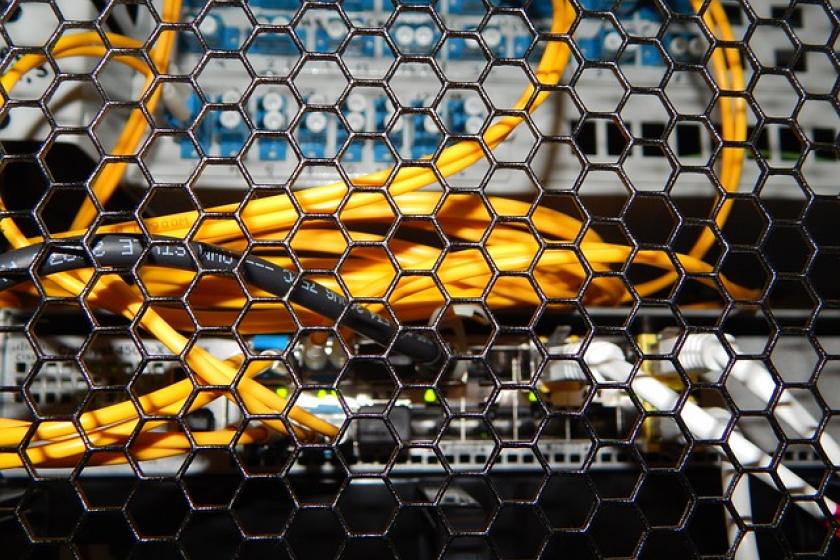How to Cope with Network Equipment ShortagesHow to Cope with Network Equipment Shortages
Lead times are growing, and patience is wearing thin. Here are some ways you can deal with the unprecedented supply chain disruption.
April 12, 2022

Are you having trouble finding essential network equipment? You're not alone.
Equipment shortages have reached record levels across virtually all network categories and device types. "The longest lead times seem to be for larger, more complex devices, such as data center and core/distribution switches, and large WAN edge devices, including routers and SD-WAN equipment," says Mark Allen, director of network advisory services with global technology research and advisory firm ISG.
The shortage's primary cause is a high demand for the chips that go inside virtually all types of network gear. A shortfall of these critical components, caused by the COVID pandemic and skyrocketing demand for network gear, is forcing enterprises worldwide to scale back their network upgrade and expansion plans. All classes of networking gear are constrained: campus, data center, LAN, routing, and wireless, says John Annand, infrastructure and operations research director at IT market analysis firm Info-Tech Research Group.
Market research firm Gartner reported in mid-January that the chip shortage is expected to ease during the second half of 2022, with global semiconductor revenue projected to grow 9.4% in 2022 to $638.6 billion. This will be followed by slower growth in 2023 and 2024 as the chip shortages decrease and prices stabilize.
That's good news, of course. Yet, for network device customers, the wait may seem interminable. Given current conditions, enterprises need to be prepared for longer lead times, higher prices, and more rigorous deal terms from OEMs and VARs, Allen warns.
Most vulnerable
While the chip shortage has affected a wide range of equipment customers, it has particularly hurt enterprises building new network sites, as well as organizations that have deferred equipment maintenance and refreshes, adopted a just-in-time delivery model, or haven't yet transitioned to a cloud-native model. "Software has allowed us the ability to reconfigure what services run atop our network with a great degree of flexibility, but if you physically need new or more ports, you're in a bit of a bind," Annand notes.
SMBs and enterprises placing smaller orders are more likely to see longer lead times than major organizations placing large orders supporting big lifecycle projects or transformations, Allen says. "The OEMs aren’t necessarily following a first-in, first-out model on orders but, rather, focusing on fulfilling larger orders for more strategic clients."
Coping strategies
There's no one best way for an enterprise to cope with network equipment shortages, but with lead times stretching 40 to 60 weeks on components, every enterprise will have to find a way, or perhaps even several methods, that will work for them.
Annand offers the following suggestions:
Modify the network. There are many ways to build a network. If parts are unavailable for the initial design, perhaps a different approach, using equipment that's immediately in stock, can lead to a similar outcome.
Defer deployments. While some network deployments are foundational, such as those in the data center core, others can be safely postponed. In situations where performance or feature compromise is unacceptable, then as unpalatable as it may be, deferral might be the only option.
Explore secondary markets. Some vendors offer refurbished equipment, either directly or through partners.
Increase density. Every network engineer knows there are dead ports and underutilized links in their environment—10-25%, depending on whose numbers you believe, Annand says. Get rid of them.
Look to the cloud. Public cloud services can potentially provide at least minimum viable functionality for new or growth workloads. Better yet, by the time networking components become easily available again, it may no longer make sense to proceed with an on-prem footprint of the same magnitude.
Switch vendors. Not all vendors are feeling the pain equally, so it can be tempting to seek another source. Remember, however, that switching vendors comes with compatibility, complexity, and support implications.
Explore whitebox alternatives. There has been a measurable uptick of interest in whitebox networking over the past few years. Using a Linux-based network operating system, for instance, breaks the dependency between network function and hardware vendor. "This allows you a variety of OEMs from which to acquire the physical hardware and at a much lower cost," Annand says. Lower cost, however, comes with increased engineering responsibility and accountability. "So you must make sure your team is prepared, and you are prepared to invest in and retain them," he warns.
Increase your spend. The law of supply and demand is alive and well. Companies willing to spend transactionally or strategically more can expect to have a different experience dealing with the equipment backlog than those who keep to the status quo of 2020.
Future outlook
Fabrication plants take years to build. "The two plants Intel announced in May 2021 are expected to come online in 2024, so there is no quick solution evident," Annand says. "I don’t think it's unreasonable to say that there will be supply constraints into 2023."
Remember, too, that future events, such as a Chinese attack on chip manufacturing giant Taiwan, could make today's chip shortage seem mild by comparison.
For the short- to mid-term—six to 24 months—there shouldn’t be any appreciable change to equipment lead times, Allen says. "As chip supplies improve over time, and supply-chain issues get resolved post-pandemic, we expect to see long lead times begin to ease."
Related articles:
About the Author
You May Also Like




